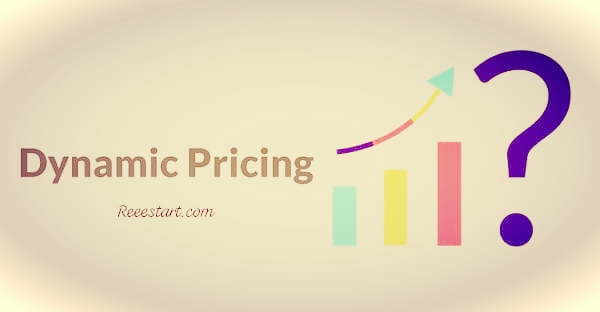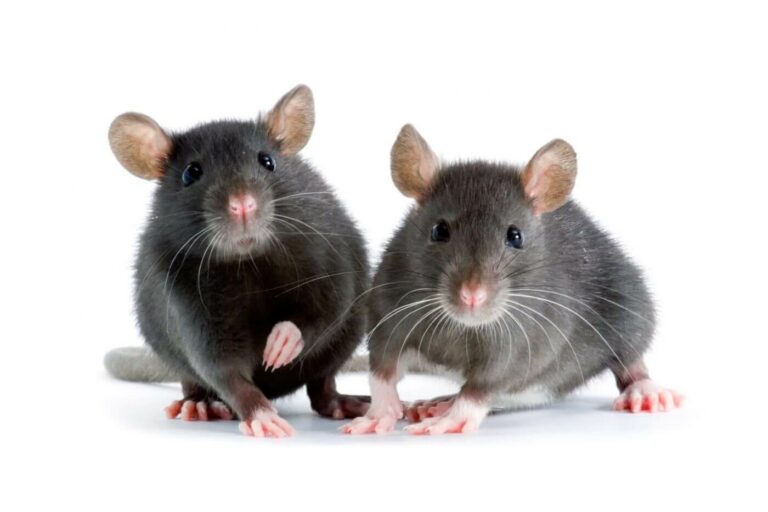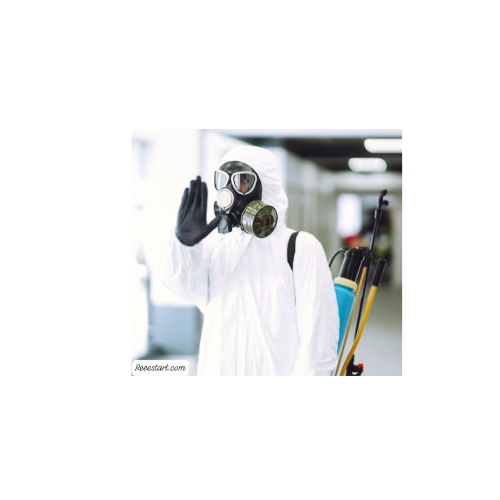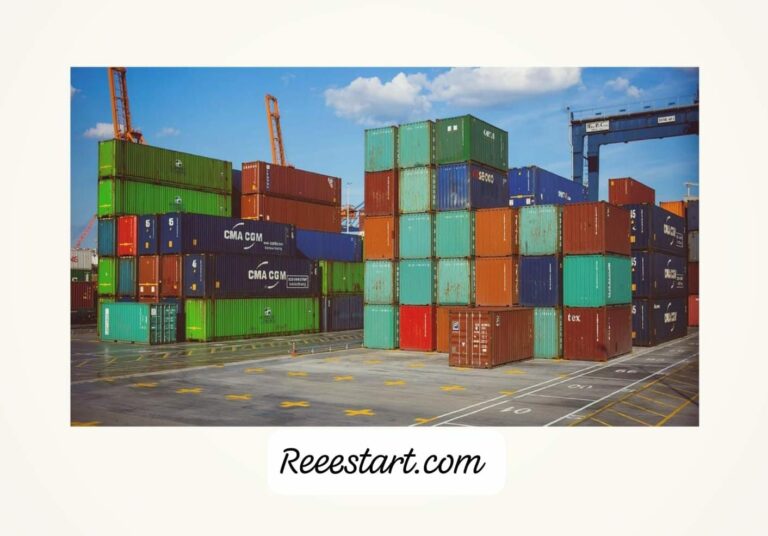Pricing pest control services effectively is critical to running a successful business, particularly in the competitive UAE market. Proper pricing ensures your business remains profitable while also staying competitive in an industry that often faces fluctuating demand and seasonal variations. In setting these prices, it’s crucial to account for all the different types of costs involved, such as labor, materials, equipment, and overhead. This guide will break down each cost component, explain why certain costs are categorized as overhead, and provide insights on calculating profit margins. Furthermore, we’ll compare one-time services with recurring contracts to assist you in determining the best pricing strategy for your pest control business.
Pricing Pest Control Services in the UAE
Here, we will discuss a detailed essay about Pricing Pest Control Services in the UAE.
Cost Calculation for Pest Control Services in the UAE
When determining how much to charge for pest control services, you must consider both direct and indirect costs. Direct costs are those that can be directly linked to the delivery of the service (such as labor, materials, and equipment). Indirect costs, or overhead, are expenses that are necessary for operating the business but cannot be directly attributed to individual jobs (such as office rent, management salaries, and marketing). Here’s how to break down each cost category:
Labor Costs: Technician
Labor costs are one of the most significant direct costs in pest control services. These costs refer to the salaries or wages paid to technicians who provide the service. In the UAE, the salary of a pest control technician typically ranges from 2,500 AED to 3,000 AED per month, depending on their experience and expertise.
To calculate the hourly wage for a technician, we make the following assumptions:
- Working days per month: 26
- Working hours per day: 8
- Hourly Wage Calculation: Hourly wage = Monthly salary ÷ (Working days per month × Working hours per day)
Hourly wage = 2,500 AED ÷ (26 days × 8 hours) = 2,500 AED ÷ 208 hours = 12.02 AED per hour. - If a technician spends 2 hours per service, the labor cost for that service would be: Labor cost = Hourly wage × Hours worked
Labor cost = 12.02 AED × 2 = 24.04 AED per service.
This breakdown is essential for understanding how the labor costs scale with the number of technicians and the number of services provided. The variability in technician salary can impact your overall service price, making it important to adjust prices according to technician expertise.
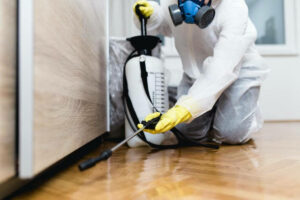
Material Costs
Material costs involve the purchase of chemicals, pesticides, traps, baits, and other necessary tools for pest control. The type and complexity of the infestation influence these costs.
Examples of Material Costs:
- Pesticides: 50 AED to 300 AED per liter.
- Baits and traps: Range from 5 AED to 75 AED per unit. Simple rodent traps cost around 5 AED to 15 AED, while more specialized traps or baits may cost 20 AED to 75 AED each.
- The material cost for a typical residential pest control service may range between 30 AED to 75 AED, depending on the complexity of the infestation. The variability is primarily due to the type of pest being dealt with and the materials required to effectively eliminate them.
Equipment Costs
Pest control services require specific equipment such as foggers, sprayers, dusters, and more. The cost of this equipment is often amortized over multiple uses, meaning the expense is spread out across several jobs to reduce the per-service cost.
- Example: Fogger Equipment Cost Let’s assume a fogger costs 2,000 AED and is used for 1,000 services.
- Equipment Cost per Service = 2,000 AED ÷ 1,000 services = 2 AED per service.
- By using the equipment for a greater number of services, the amortized cost per service decreases, which in turn helps reduce the total service cost.
Overhead Costs
Overhead costs are the indirect expenses associated with running the business that can’t be attributed to a specific service. These include salaries for management and office staff, office rent, utilities, insurance, marketing, and other general operational costs.
Overhead typically ranges between 15% to 30% of the total service cost, and the variation depends on the scale of the business and its efficiency in managing these costs. Here’s why these expenses are categorized as overhead:
Salaries for Other Staff: While technician salaries are direct costs, the salaries of administrative, management, and support staff are part of overhead because these employees help run the business but do not directly perform the pest control services.
- Engineers: 5,000 AED to 8,000 AED per month.
- Sales staff: 3,000 AED to 5,000 AED per month.
- Operations Manager: 7,000 AED to 12,000 AED per month.
- Administrative staff: 2,500 AED to 4,000 AED per month.
- Office Rent: Rent for an office space in the UAE, particularly in cities like Dubai, ranges from 20,000 AED to 50,000 AED annually, depending on the size and location. This is categorized as overhead because it supports the overall operations but is not tied directly to each individual service.
- Utilities (DEWA): Monthly electricity and water costs can range from 500 AED to 1,500 AED, depending on office size and usage. These are necessary operational expenses, which support the business but do not correlate directly with a specific service.
- Marketing and Advertising: A marketing budget between 2,000 AED to 5,000 AED per month is often needed to maintain customer awareness. This is necessary for generating business and maintaining a competitive edge in the market but is not directly tied to individual jobs.
- Insurance: Pest control companies require liability insurance, which may range between 2,000 AED and 5,000 AED annually. This expense is important for covering potential liabilities and legal risks but is part of overhead.
- Miscellaneous Office Expenses: Office supplies, stationery, and other administrative costs generally range from 1,000 AED to 3,000 AED per month.
- For instance, if the direct costs (labor, materials, and equipment) for a service amount to 104 AED, overhead costs might add an additional 30 AED per service, bringing the total service cost to 134 AED.
Pricing One-Time Services vs. Recurring Contracts
One-Time Services
- One-time services are priced higher because all costs, including a markup for profitability, are covered in a single payment. Since there is no guarantee of repeat business, companies price these services higher to ensure profitability over the long run.
- For example, if the total cost for a one-time service is 134 AED (including labor, materials, equipment, and overhead), a markup of 50% would result in:
- Service Price Calculation for One-Time Service: Service price = Total cost × (1 + markup)
Service price = 134 AED × (1 + 0.50) = 134 AED × 1.50 = 201 AED. - This means the price for a one-time service would be 201 AED.
- Profit Margin for One-Time Service
To calculate the profit margin, the formula is: Profit margin = (Profit ÷ Total cost) × 100
Profit margin = (201 AED – 134 AED) ÷ 134 AED × 100 = 50%.
Recurring Contracts
For recurring contracts, the service price per visit is generally lower because of the regular commitment from the client. The recurring nature of the contract ensures a steady cash flow, even though the profit margin per visit may be lower.
- For example, if a recurring service costs 80 AED per month for quarterly visits, and the cost per visit is 60 AED, the profit per visit would be:
- Profit per Visit = Revenue per visit – Cost per visit
Profit per visit = 80 AED – 60 AED = 20 AED. - Profit Margin for Recurring Service
Profit margin = (20 ÷ 60) × 100 = 33.33%.
Range of Profit Margins (5% to 30%)
Profit margins in pest control vary significantly depending on the type of service, market conditions, and client profile. The following scenarios provide a sense of the typical range of profit margins in the industry:
- Low-End Profit Margin (5% to 10%): For highly competitive markets or long-term commercial contracts, the margin might be lower. For example, if a service is priced at 120 AED and the total cost is 110 AED, the profit margin would be: Profit margin = (120 – 110) ÷ 110 × 100 = 9.09%.
- Moderate Profit Margin (15% to 20%): For many businesses, a reasonable and sustainable margin would be between 15% and 20%. For example, if a service costs 120 AED and is priced at 150 AED, the profit margin would be: Profit margin = (150 – 120) ÷ 120 × 100 = 25%.
- Higher Profit Margin (25% to 30%): Specialized services or premium offerings, such as termite or bed bug treatments, may allow for higher profit margins. For example, if a service costs 150 AED and is priced at 200 AED, the profit margin would be: Profit margin = (200 – 150) ÷ 150 × 100 = 33.33%.
Determining Your Profit Margin
The appropriate profit margin for your pest control services will depend on multiple factors:
- Market Competition: In highly competitive markets, you may need to lower your margins, especially for recurring contracts.
- Service Complexity: Specialized services (such as termite treatment) typically command higher margins due to their complexity and higher material costs.
- Client Type: Commercial contracts and long-term clients might have lower margins but offer steady revenue streams.
- Operational Efficiency: Streamlining operations, optimizing routes, and purchasing materials in bulk can reduce costs, improving profit margins.
Pricing pest control services in the UAE involves considering several factors like labor, material, equipment, and overhead costs. One-time services typically yield higher profit margins (20%-50%), while recurring contracts offer lower margins (10%-30%) but provide long-term revenue stability. By carefully calculating these costs and strategically setting your prices, you can maintain profitability and remain competitive in a dynamic market.

